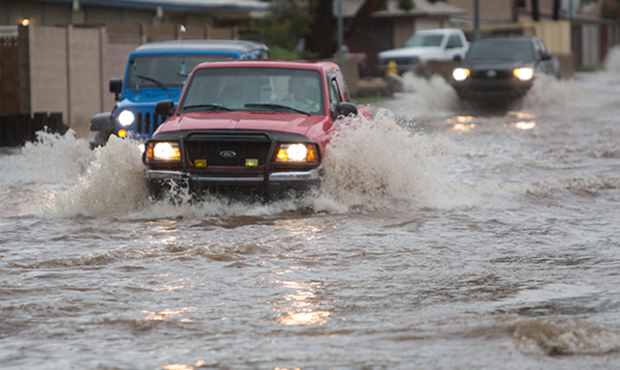The most common residential sizes, Five-inch K-style gutters or 6-inch half-rounds, are able to handle the rainfall on most houses in most parts of the country. But houses with big, steep roofs or those located in climates prone to heavy downpours may need wider gutters and extra downspouts to keep rainwater from overflowing.
To figure out what size gutters you need, first you’ll need to calculate the square footage of the gutter’s drainage area. For a simple gable-end roof, you would only need to make two calculations, one for each slope. Hip roofs and intersecting roofs have multiple facets, and for those you’ll need to add up the area (length x width) of each surface within a drainage area to get the total square footage.
Adjusting for Pitch and Rainfall
Once you know the total square footage of drainage for each gutter, you’ll need to adjust for the following two factors:
1. Roof-pitch factor
The steeper a roof’s pitch, the more windblown rain it can collect. You can measure pitch with a 2-foot level and a tape measure: Hold one end of the level against the roof, level it, and then measure the distance between the roof and the underside of the level at its midpoint, which gives you a 12-inch run. A 5-inch gap, for instance, is a 5-in-12 pitch. Once you know pitch, you can find your roof-pitch factor in the table below.
Roof pitch / Roof-pitch factor
12 in 12 or higher 1.3
9 in 12 to 11 in 12 1.2
6 in 12 to 8 in 12 1.1
4 in 12 to 5 in 12 1.05
Flat to 3 in 12 1
2. Maximum rainfall intensity
The U.S. Weather Bureau records the maximum rainfall that could possibly happen in a 5-minute period, in inches per hour, for various regions. The higher the amount, the bigger a gutter has to be to keep from being overwhelmed in a storm burst. Download this handy table to find out the number for your area.








